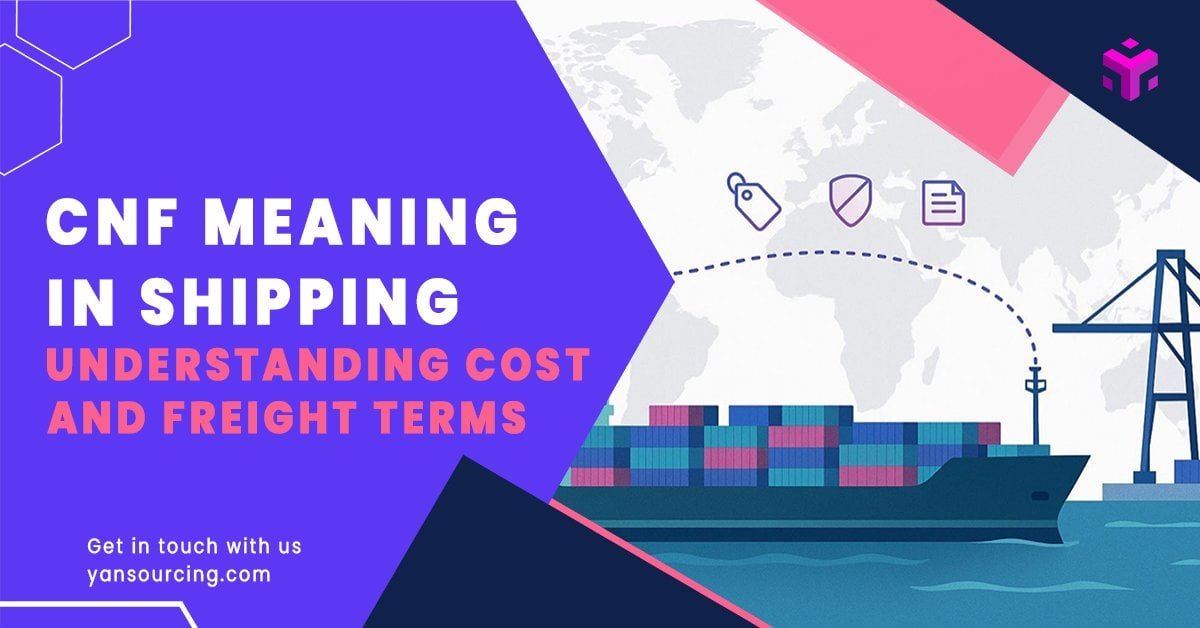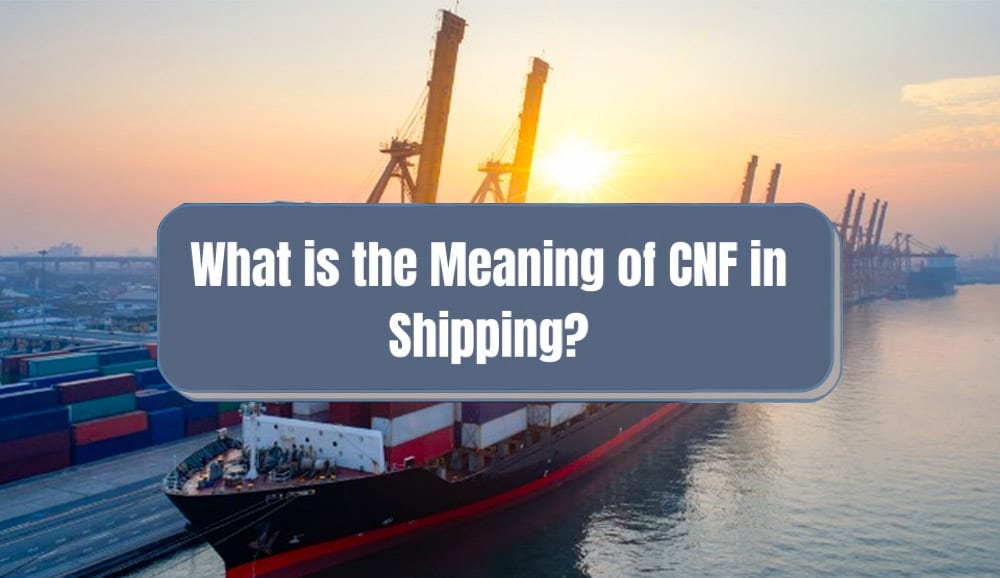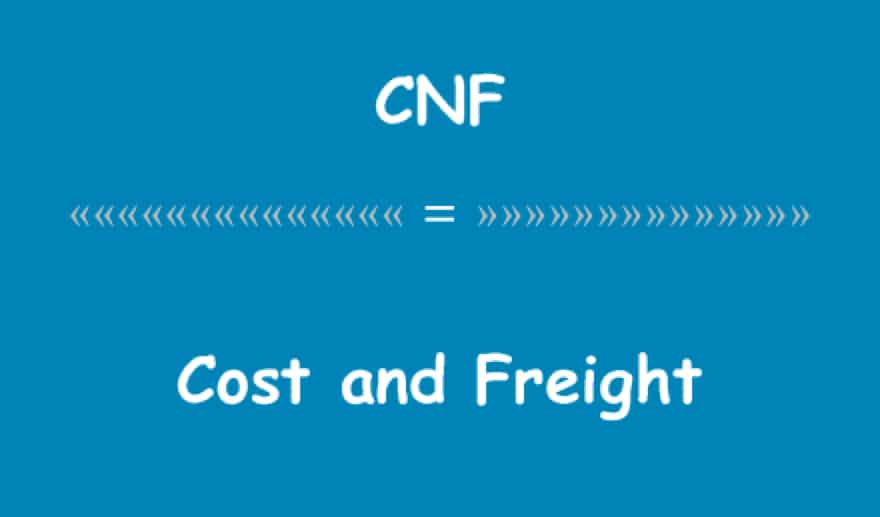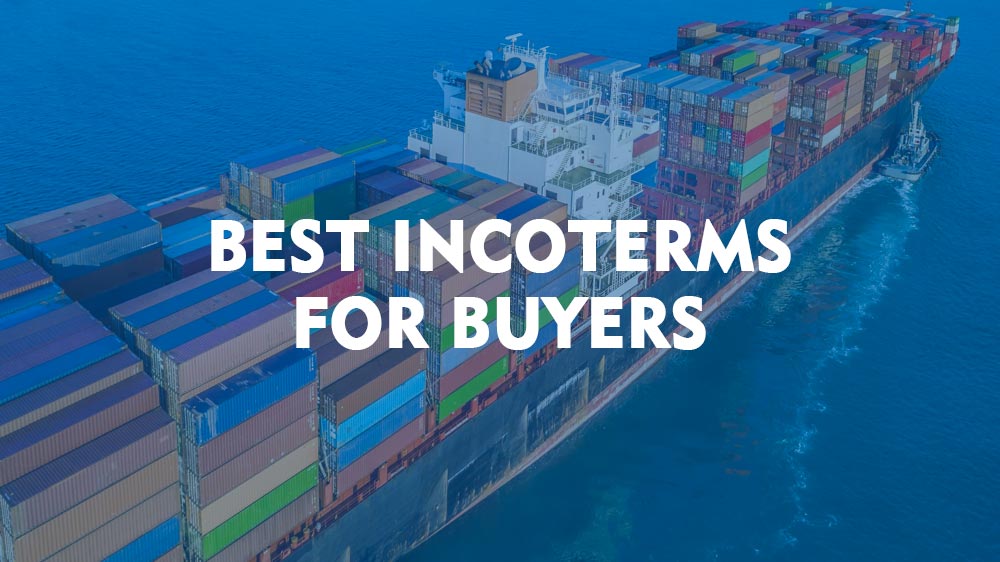
If your China supplier quoted “CNF Los Angeles,” you’re seeing a legacy label for the official Incoterm CFR (Cost and Freight).
In short: the seller pays the ocean freight to your named destination port, but your risk starts once the goods are on board at the origin port—and insurance is not included.
The International Chamber of Commerce still lists the rule as CFR in Incoterms 2020 (current as of 2025), not CNF, so use “CFR” in contracts and POs for clarity, per the ICC’s own Incoterms 2020 overview (ICC Incoterms 2020 rules overview).
What “CNF/CFR” actually means

- Core idea: Under CFR, the seller arranges and pays for the main carriage (ocean freight) to the named destination port. However, delivery—and the transfer of risk—occurs earlier, when the cargo is placed on board the vessel at the port of shipment. Insurance is not included by default. These points are consistently described in reputable trade guidance, including the CFR rule explainers that confirm risk transfers on loading and that CFR is maritime-only (Trade Finance Global: CFR meaning).
- Terminology: “CNF” or “C&F” is commonly used in practice (especially in China export quotes), but the correct, official rule name is CFR under Incoterms 2020 (ICC). When you write your contract, use the wording “CFR [Destination Port] Incoterms 2020.” See the ICC’s Incoterms 2020 hub for the rule set and scope (ICC Incoterms 2020 rules overview).
What’s included vs. excluded under CFR

Included (seller’s typical responsibilities):
- Export customs clearance and origin formalities
- Origin handling necessary to load the goods on board
- Ocean freight to the named destination port
Excluded (typically the buyer’s responsibilities unless otherwise agreed):
- Cargo insurance (arrange your own, or choose CIF if you want the seller to arrange it)
- Destination terminal handling charges (THC) and other local port charges at arrival; these are local terminal costs for handling your container at the destination port, which vary by terminal and carrier (iContainers: Terminal Handling Charges explainer)
- Unloading from the vessel, import customs clearance, duties and taxes
- Any post-arrival time-based penalties such as demurrage and detention if free time is exceeded; U.S. regulators define demurrage as charges at the terminal beyond free time and detention as charges for equipment kept outside the terminal beyond free time (Federal Maritime Commission: Detention and Demurrage)
- Inland transportation from the destination port to your warehouse or FBA/DC
Note: Exact charge names and amounts at destination vary by port, terminal, carrier, and local tariffs. Always verify your destination quote with your forwarder or customs broker before shipping.
Risk transfer and insurance: the part most people miss
- Risk transfer point: Under CFR, risk passes from seller to buyer once the goods are on board at the origin port. That means any loss or damage during the sea voyage is on the buyer, even though the seller paid the freight. This on-board delivery concept is a core feature of the rule, as summarized in reputable CFR explainers (Trade Finance Global: CFR meaning).
- Insurance: CFR does not oblige the seller to insure the cargo. If you want the seller to provide insurance, choose CIF instead; otherwise, arrange your own cargo policy.
- Quick comparisons:
- CIF vs CFR: CIF adds an insurance obligation for the seller; risk still transfers on loading.
- FOB vs CFR: Under FOB the buyer arranges and pays main carriage; risk still transfers on loading.
- CPT vs CFR: CPT is multi‑modal; risk usually transfers when the goods are handed over to the first carrier, not on board a vessel.
Worked scenario: a China-to-Los Angeles CNF quote

- Product: Ceramic home décor (vases and candle holders)
- Quantity/size: 120 cartons, 12 CBM, 4,800 kg
- Route: Foshan/Guangzhou → Port of Los Angeles
- Supplier quote: “CNF Los Angeles = USD 2,350” (seller covers export formalities, origin handling to load on board, and ocean freight)
What the buyer should still expect to handle and budget for on arrival:
- Destination terminal/local charges (e.g., THC, port security/ISPS-type surcharges, documentation/release fees)
- Cargo insurance (if not purchased separately)
- Customs broker fee, import customs clearance, duties/taxes
- Drayage/trucking from the terminal to warehouse or FBA/DC
- Potential storage, demurrage, or detention if documents are not ready or if pickup is delayed (definitions and regulatory context are outlined by the U.S. Federal Maritime Commission’s guidance on detention and demurrage)
Documentation pitfalls that often trigger extra charges:
- Commercial Invoice (CI), Packing List (PL), and Ocean Bill of Lading (B/L) must match each other and the physical cargo in key fields (descriptions, quantities, weights, HS codes where applicable). Major carriers provide practical overviews of essential U.S. import documents and their roles (Maersk: 5 vital shipping documents for the U.S.).
- U.S. ISF (“10+2”) filing must be completed before departure for ocean imports; missteps here can cascade into holds and storage at destination. Your customs broker can coordinate this; ensure supplier data is complete and on time (see the same documents overview above for timing context).
Takeaway: A CNF/CFR freight quote is not a landed cost. Your final unit cost will depend heavily on destination local charges, duty rates for your HS codes, and how efficiently your broker and drayage are coordinated.
When to choose CFR vs CIF vs FOB (quick guide)

Choose CFR when:
- You want the seller to handle booking and pay the ocean freight to your port, but you prefer to control insurance and destination logistics.
Choose CIF when:
- You want the seller to include basic cargo insurance. Still confirm the insurance scope and limits; some policies are minimum coverage.
Choose FOB when:
- You (or your forwarder) prefer full control and visibility over the main carriage cost and schedule from origin.
Frequently asked questions (fast answers)
1. Is CNF the same as CFR?
In practice, yes—CNF/C&F is the colloquial term many suppliers use for what the ICC defines as CFR under Incoterms 2020. For contracts, write “CFR [Port] Incoterms 2020.” See the ICC’s hub for the official rule set (ICC Incoterms 2020 rules overview).
2. Who pays destination charges under CFR?
Typically the buyer pays destination terminal/local charges and import formalities unless otherwise agreed. Terminal Handling Charges at destination are local terminal costs that vary by port and carrier (iContainers: Terminal Handling Charges explainer).
3. Where does risk transfer under CFR?
When the goods are on board the vessel at the port of shipment (not on arrival). This on‑board delivery point is a core CFR feature summarized by respected trade guides (Trade Finance Global: CFR meaning).
4. Does CFR include insurance?
No. You can buy your own cargo insurance or choose CIF if you want the seller to arrange it.
5. Any tips to avoid demurrage/detention on a CFR shipment?
Pre‑clear documents, align invoice/packing list/B/L details, file ISF on time for U.S. imports, and pre‑book drayage for prompt pickup. The U.S. Federal Maritime Commission explains how demurrage and detention result from exceeding free time windows (Federal Maritime Commission: Detention and Demurrage).
Final thoughts
CFR (often quoted as “CNF”) can be a good fit when you want the exporter to arrange ocean freight to your port but still keep control over insurance and destination logistics.
Just remember: risk transfers on loading at origin, and destination port charges and import formalities remain yours unless you explicitly negotiate otherwise. Before you ship, ask for an itemized destination estimate from your forwarder or broker so there are no surprises.
Get a Free CNF Shipping Quote from China with Yansourcing.
